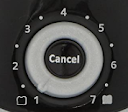Uncle Genie's Cook's Book
23.4.25
Short Cut Cinnamon Rolls
27.3.24
Coffee: A New Brew Review
This "cold brew" is my favorite coffee, to date, after decades of trials of various methods and brands. Not to put too fine a point on it, it is born of laziness. Nonetheless, it packs the most flavor and the least bite.
It is a considerably different preparation from that in an earlier entry, Coffee Press—A superior coffee experience?
This method creates a 1:3 coffee concentrate which I keep in the fridge in mason jars. I shake the jar to re-oxygenate the concentrate prior to each use, then mix 1 part part coffee concentrate with 3 parts water, then nuke. Here's the gist of the concentrate preparation: I place
- 200 grams (by weight) McCafé Medium Roast in my- Bodum 51 ounce/1.5 liter coffee press which I
- Fill with heated (~180°F/82°C) tap water*, mixing the grounds with a wood , plastic, or silicone (to avoid breaking the glass) implement. I replace the press's lid but do NOT depress the plunger (See parts in Coffee Press—A superior coffee experience?). Then I
- Allow the coffee to steep at room temperature for 12 to 24 hours, at which point I
- Depress the plunger on the coffee press (it can resist so support it to avoid bending the plunger or tipping the pot) until all the grounds are at the bottom. Next, I
- Decant the coffee liquid in equal measure into two mason jars, which I put in the fridge. Then I
- Refill the pot with hot tap water, using the very same grounds, mixing the same way, recapping, but NOT pressing the plunger. I allow that to
- Steep this refill for another 12 to 24 hours at room temp, then repeat the pressing and decanting into the same two mason jars.
- I add a healthy pinch of salt to each jar—this is essential.
PRESTO! Approximately 64 ounces of coffee concentrate, which I keep in the fridge.
* My tap water is fairly neutral, but not all are.
;^)
26.3.24
Spiced Tea
- 2 Parts Tang (or similar) Orange Drink Mix
- 1 Part Lemonade Drink Mix
- Cinnamon and/or other spices to taste (Nutmeg, Cardamon, Ginger, Allspice, among others)
For a basic 20 ounce hot Spiced Tea, I use rounded teaspoons as the measure and 3 shakes of ground cinnamon.
This style of drink is known by other names (Russian Tea, Winter Tea, Masala Chai Tea, etc.) and can also include other flavors, such as pineapple, cayenne, or black pepper. It's a comfort drink, so create your own. And there's no law that prohibits enjoying this year 'round nor any regulations requiring that it be served hot, so have at it.
;^)
27.3.21
Wet-Smoked Indoor Barbecue

 This isn't actually a barbecue recipe according to the "outdoors, open fire" definition. It is, in fact, finished under an oven broiler.
This isn't actually a barbecue recipe according to the "outdoors, open fire" definition. It is, in fact, finished under an oven broiler.Context
I live in an apartment. My stove's exhaust fan
vents directly into the kitchen. On top of that, the smoke alarm is hypersensitive. If I set my toaster control above 4, then even the neighbors know when the toast is done.
22.9.20
Toasted Almond Frappuccino
Among my recent favorites has been the Toasted Almond, a blend of Amaretto, Coffee Liqueur, and cream, in roughly equal parts, though mix recipes vary. I admit, I like it more for the almond and coffee flavors, and I find even the mild bite from the alcohol to be distracting. The truth is, I'm not a big fan of the taste of alcohol, so sue me. I've even tried duplicating the drink using alcoholic-free syrups, but the flavor just isn't the same.
Then, the other day, I was reaching into my fridge for a single-serving bottle of Frappuccino, when I happened to spot my liqueur stash on the fridge’s door shelf. And I had an “A-ha!” experience
Opening the frap, I took a couple swallows to free up some space. Next, I added two ounces of Amaretto and one ounce of Coffee Liqueur. I snugged the cap back on the frap and shook it, to mix. And then … Mmm. Not bad. Good flavor, barely noticeable bite. A Toasted Almond Frappuccino.

So, there it is, yet another way to imbibe, an important skill set to hone, in this age of isolation.
;^)










